Gameweek 14 of the English Premier League brought us a very interesting clash between Brighton and Chelsea, the match which can also be called ‘the Brighton derby’ as the former coach of the club came back to American Express Community stadium for the first time after he left the Seagulls in September.
Roberto de Zerbi succeded Graham Potter and kept the fire crackling with his modern ideas and attitude, and the game was perceived as one of the most awaited by the whole of the footballing world before the weekend.
The first half surely was the time when Brighton was the better team and created an impassable gap between the two teams. But even though the result on the scoreboard wrote 3-0 and it pictured that the Blues were dominated during the first 45 minutes, that wasn’t the whole truth about the game. They had their moments and could’ve got themselves a better situation if they managed to exploit their good situations with a greater quality of execution.
This tactical analysis will show you how the home team overpowered their opponents using the trademark Roberto de Zerbi tactics and got the best out of utilising numerical and spacial superiorities. Also, it will be an analysis of how the away team could’ve gotten more out of the game if they managed to solve some of the positive settings in their favour.
Lineups
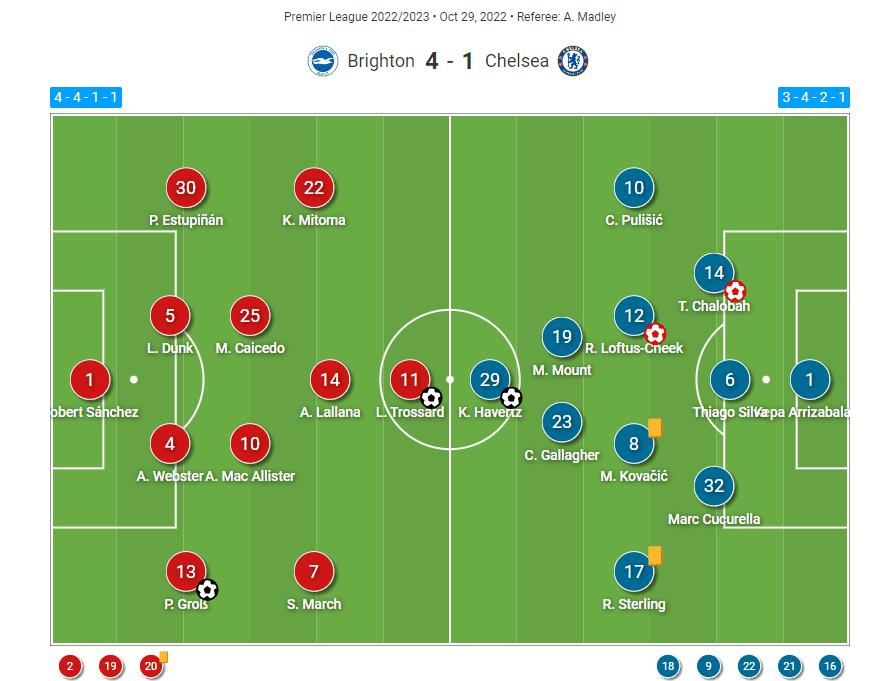
After embracing the 3-at-the-back formation in his first bunch of games as a Brighton head coach, De Zerbi decided to switch to his more familiar back four for the game against Chelsea and it came out lucrative for them. The centre-back duo was made up of Lewis Dunk and Adam Webster who played as the first-line playmakers in front of Robert Sánchez. Pascal Gross was initially set on the right-full-back position, but his role varied throughout the match.
Pervis Estupinan and March were the men providing their team with width, whilst the inner and central corridors were in the control of Alexis Mac Alister, Adam Lallana and the former Manchester United target Moisés Caicedo.
The main striker for Brighton was Leandro Trossard, who was set on the top of the lineup and was in charge of opening the paths of progression for his team.
Potter went into the game with a hybrid formation that was more role-dependent than positionally fixed. The back three in his setup was built up of Marc Cucurella, Thiago Silva and Trevoh Chalobah, and the midfield was filled in with the four roaming midfielders embodied in Ruben Loftus-Cheek, Conor Gallagher, Mateo Kovačić and Mason Mount. Christian Pulišić provided width on the right flank, and the left-hand side was covered by either Kai Havertz or Raheem Sterling, who rotated on occasions, with one always staying wide and the other being set in the striker position.
Brighton’s concept of “lure to exploit”
De Zerbi’s change in formation brought to light some of the ideas he got most famous for as his team could finally play some of his most used patterns from his former clubs. The Italian is the impersonation of the “brave football” concept that tends to call out the opposition to press high while staying calm under pressure in front of his own goal in order to open the space on the far half of the pitch to exploit it once the play switches there.
With that idea in mind, Brighton entered the game against Chelsea. They set their organizational structure in a 1-4-2 formation, waiting for the opponents to push higher.
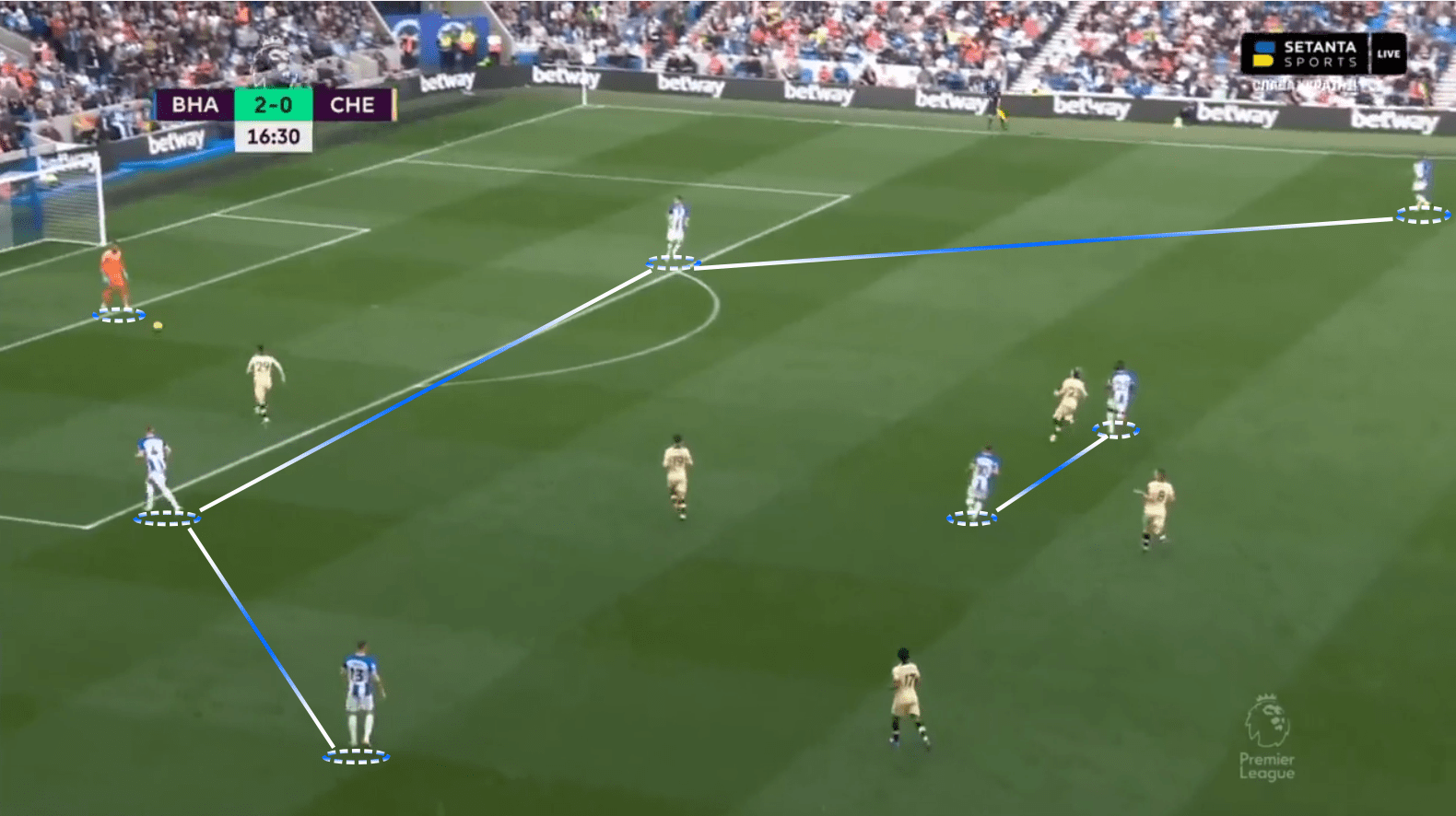
Because of the wide back-four and narrow midfield-two, the most important paths for ball progression were initially opened and the centre-backs have had an open space in front of them to go for vertical passes for the players dropping down the half-space.
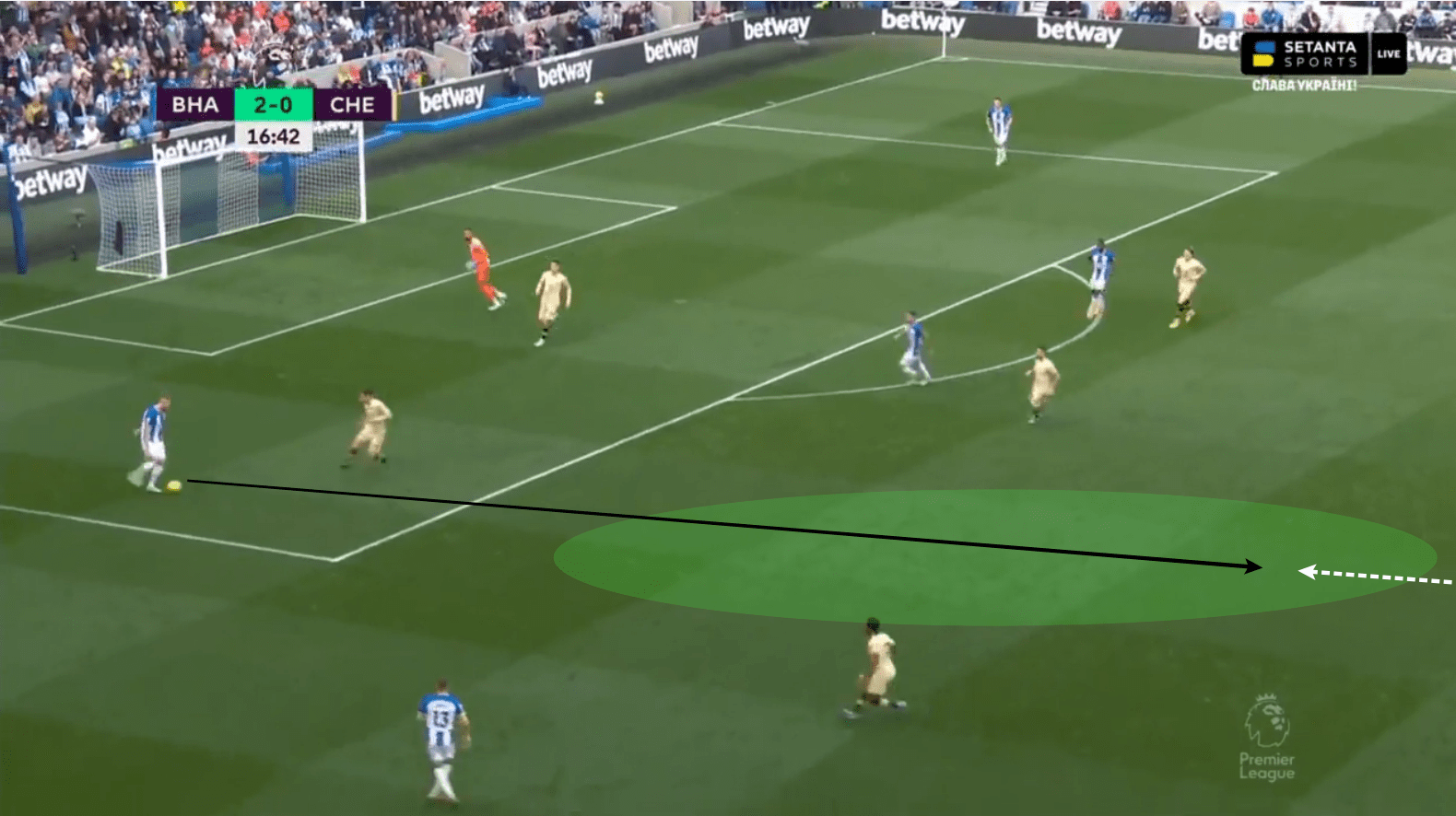
The idea that builds on the first action is the low drop of Trossard who initially positions himself really close to one of the Blues’ centre-backs. Once he locked down the defender onto himself, he then tried to lure him out of his position in order to open up the space for potential exploitation.
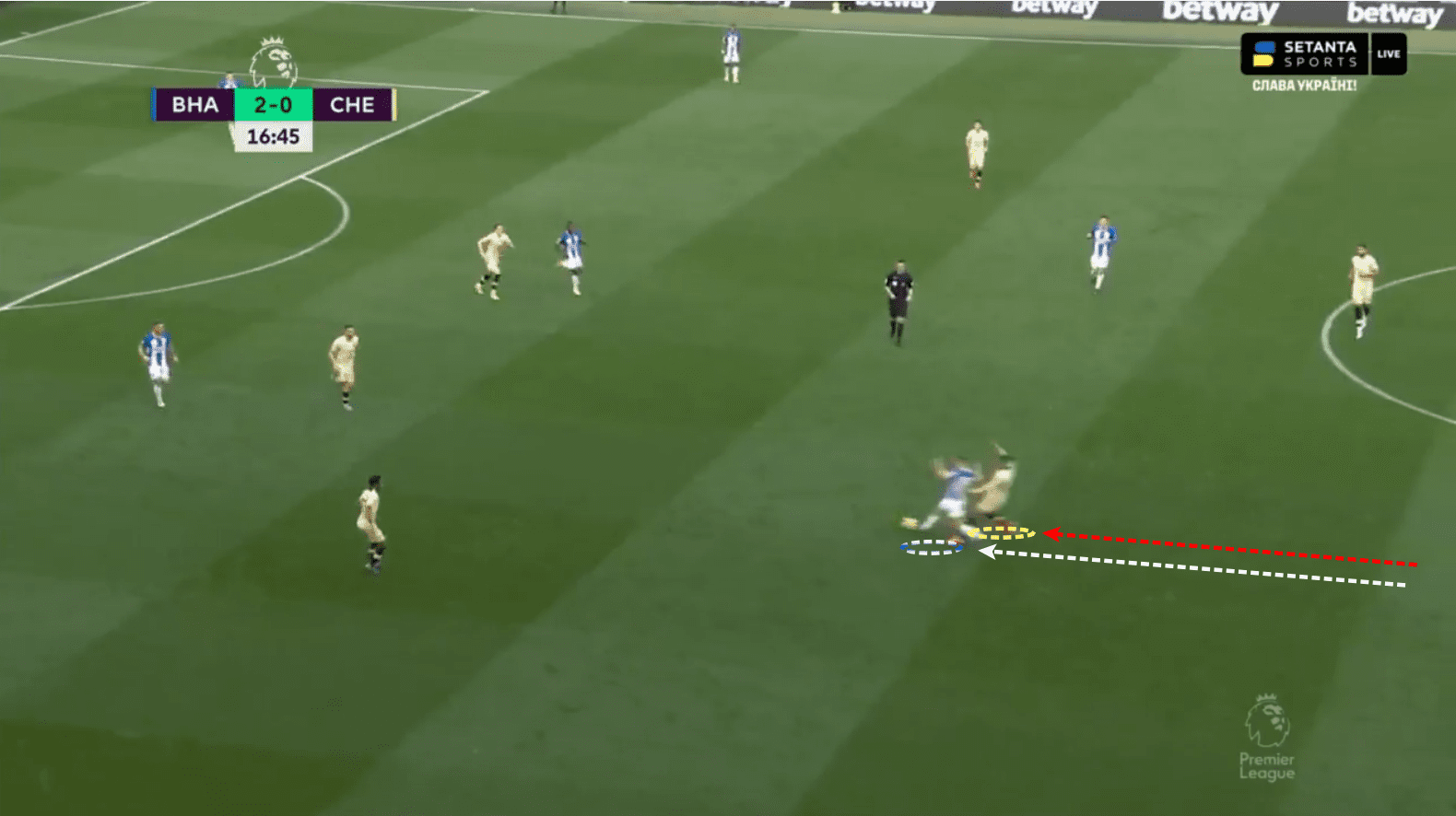
If Trossard (or any other attacker that played the role of “the bait” in similar scenarios) managed to get the ball, he time and again had his future solutions secured with the two midfielders providing a first-touch passing option and took care of the area closest to the position of the ball. We can also see that in the picture above, with two home-team players being closest to potentially getting the ball in the zone around the referee.
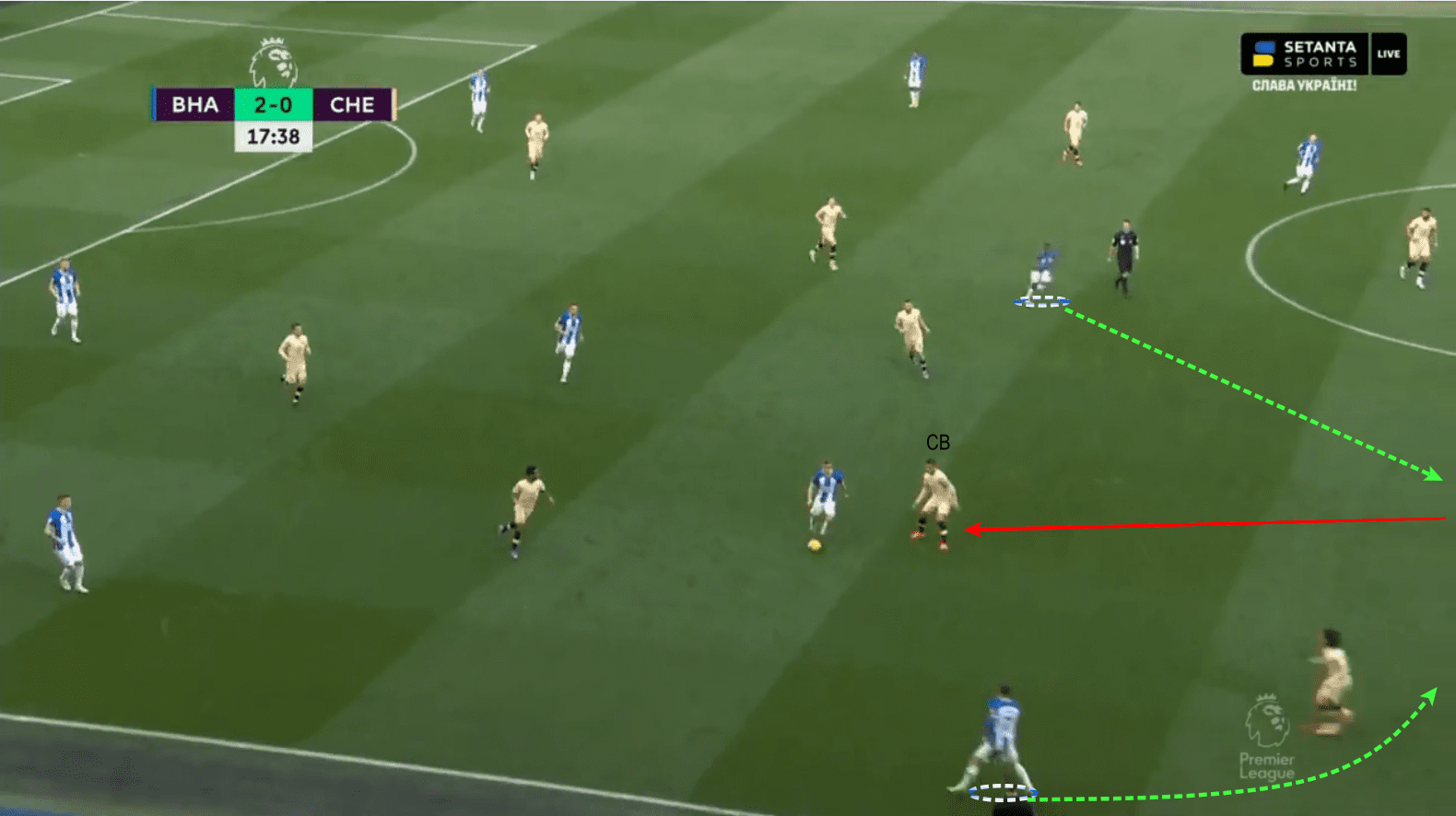
The striker with the defender on his back always had multiple options for progression/securing possession and that’s what created the necessary space/time superiority for De Zerbi’s men. The main threat they were planning on emitting came out of the second-line run-ins, either through the inner corridor or by the cut-in runs from the flank to the abandoned area.
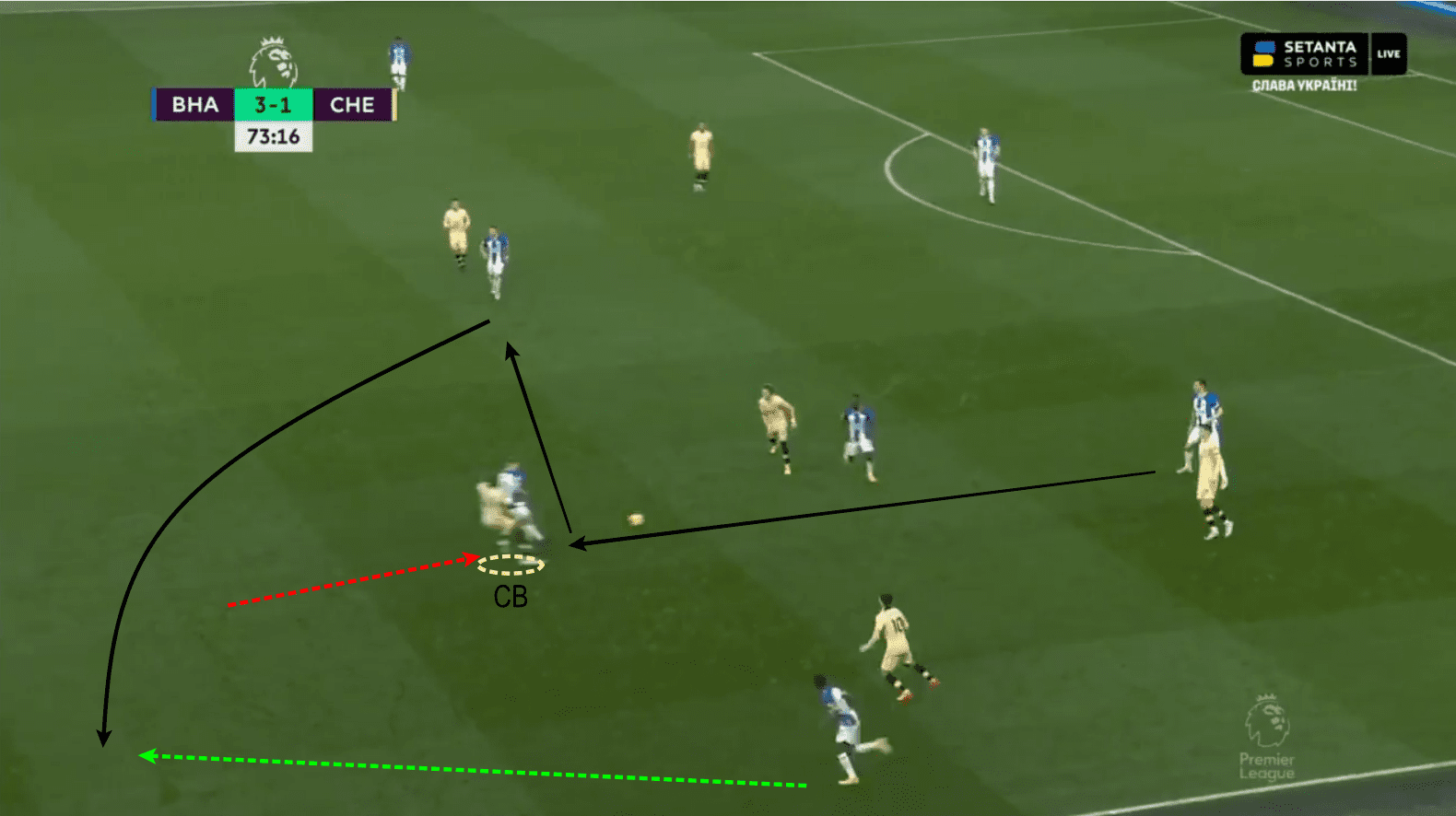
This setting happened very commonly, especially in the first half and that’s what created the biggest gap between the two teams as their fast attackers/wide players timed their runs very precisely and managed to utilize their individual quality in the team-created superiorities coming out of their tactics.
Gross’ hybrid positioning
The one idea that created the difference along with the firstly described “lure and exploit” one was the unconventional role of Brighton’s Pascal Gross. The German was initially set on the right-back position, but his role differed according to the phase of possession his team was in. If they played out of the back trying to call the opposition higher, he’ll be flanked in his spot and provided width (which can best be seen in the first two pictures of the analysis). But, if Brighton managed to overpower the first line of opponent’s pressure, and came to build up closer to the halfway line, Gross’ position would change and he’d become an additional midfielder.
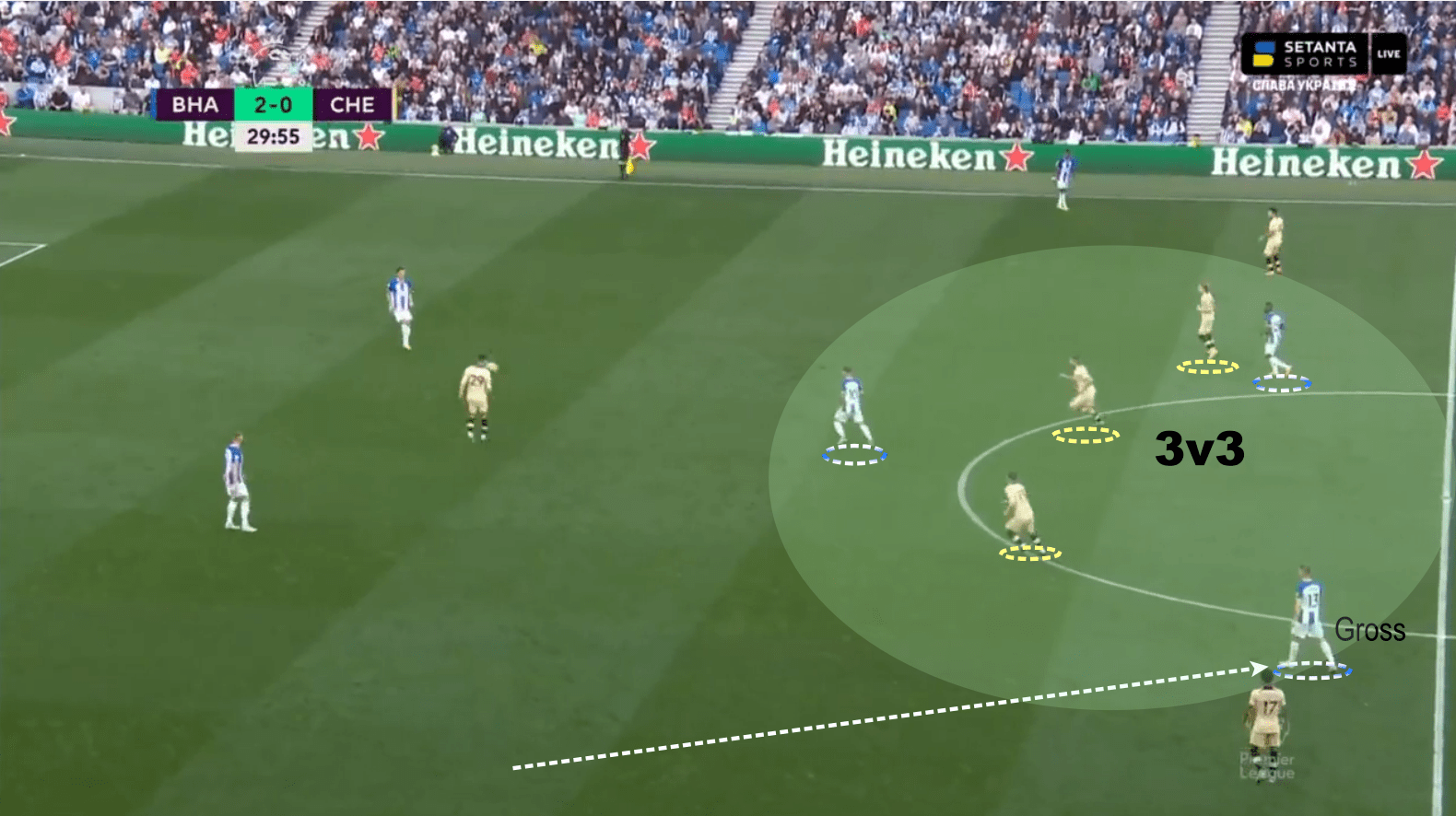
As it is said, the German’s positioning came in handy for De Zerbi in many different ways first of which is the providing of more security in the central area of the pitch and the latter one being the progression asset.
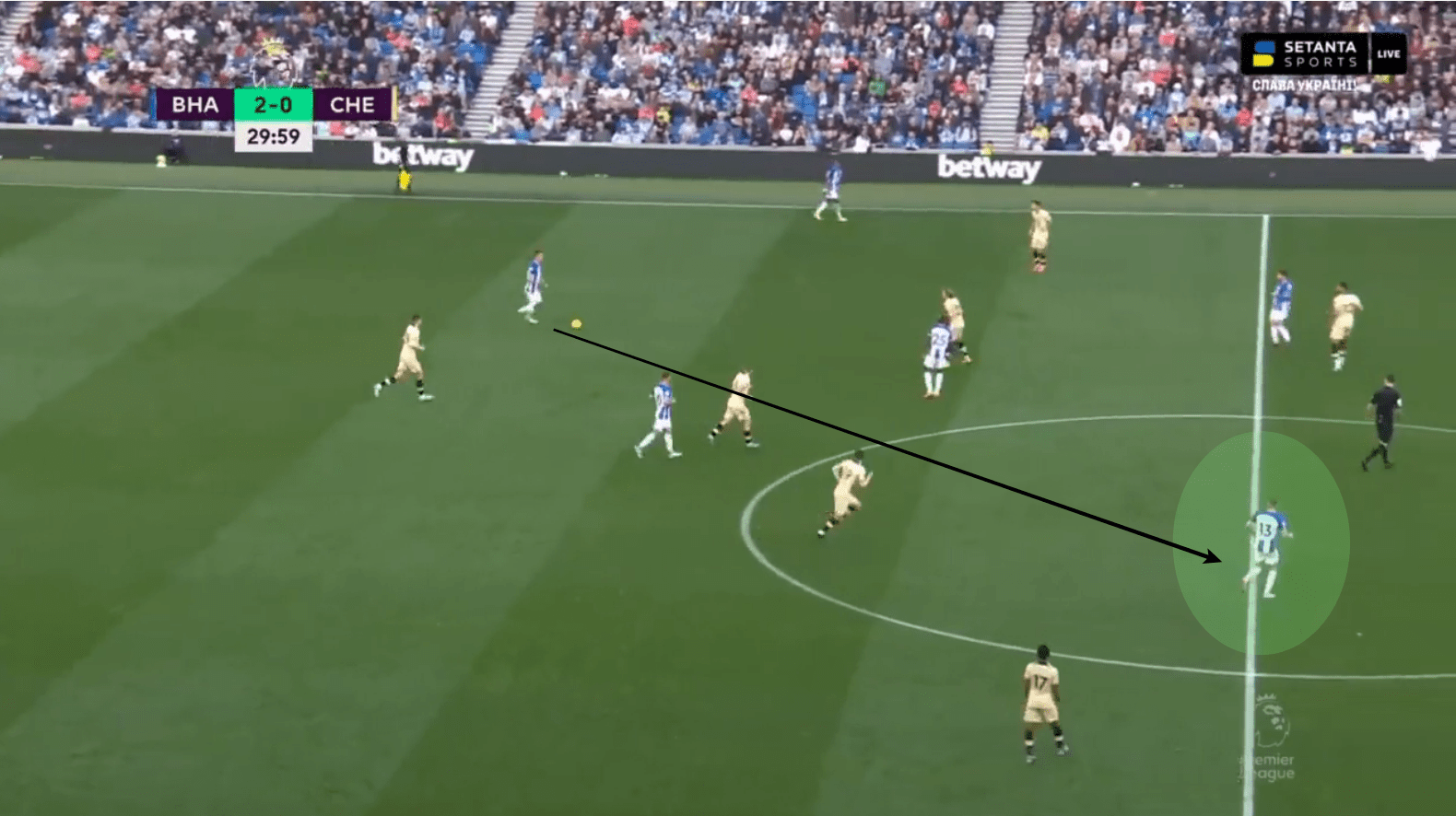
From these scenarios, Gross can play the role he’s familiar with the most as he’s undoubtedly the best when used as the midfielder. Once he gets enough space and time – which he has as is shown in the picture – he can deliver very rationally yet can play very smart passes in order to stretch the pitch or exploit his teams’ superiorities.
Along with that, when he got noticed, he made sure that his team gets the best out of it as he played as a silent conductor, orchestrating down which paths the game should be played with him not being as involved in possession but only opening the passing lanes with his positioning.
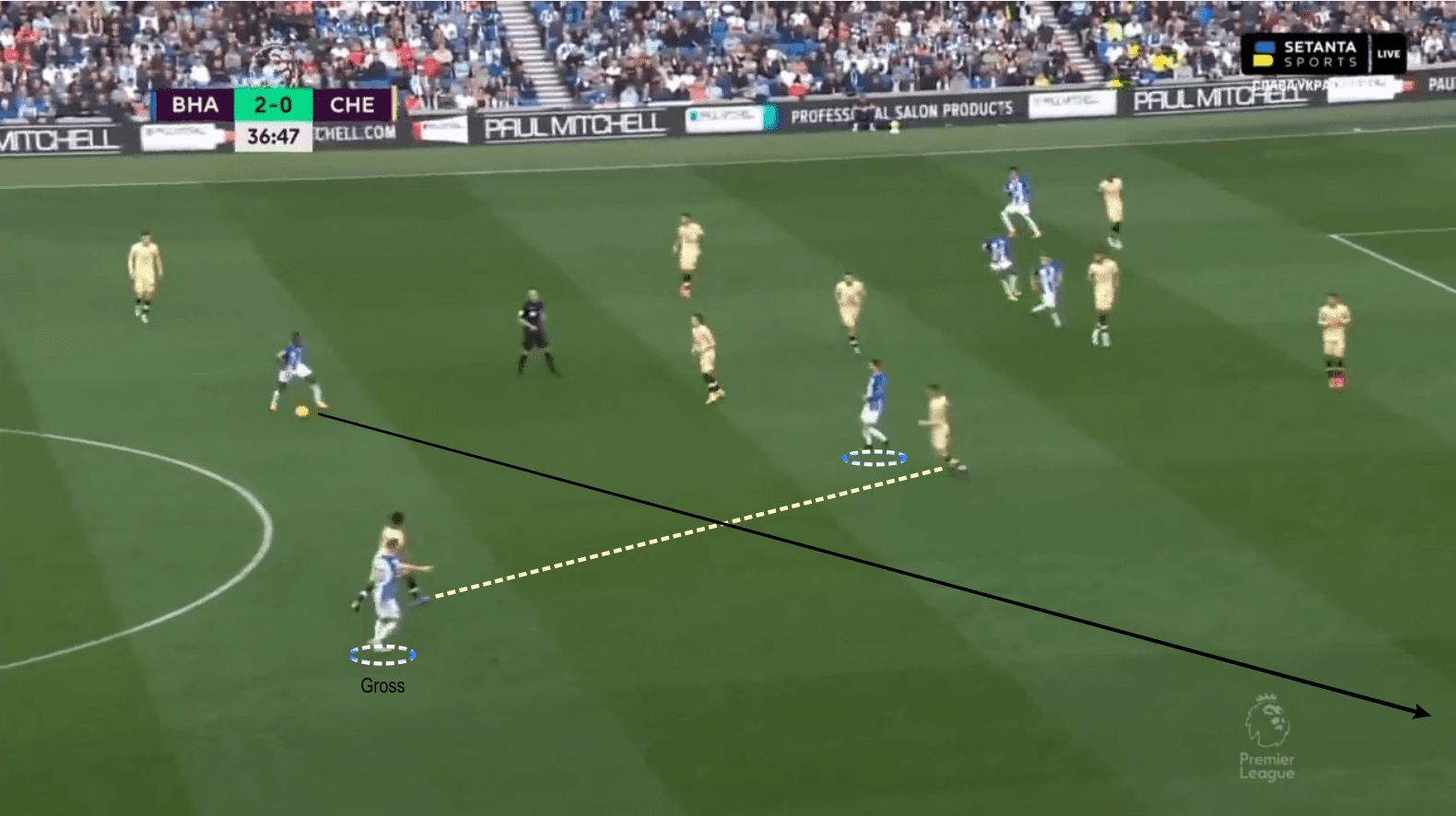
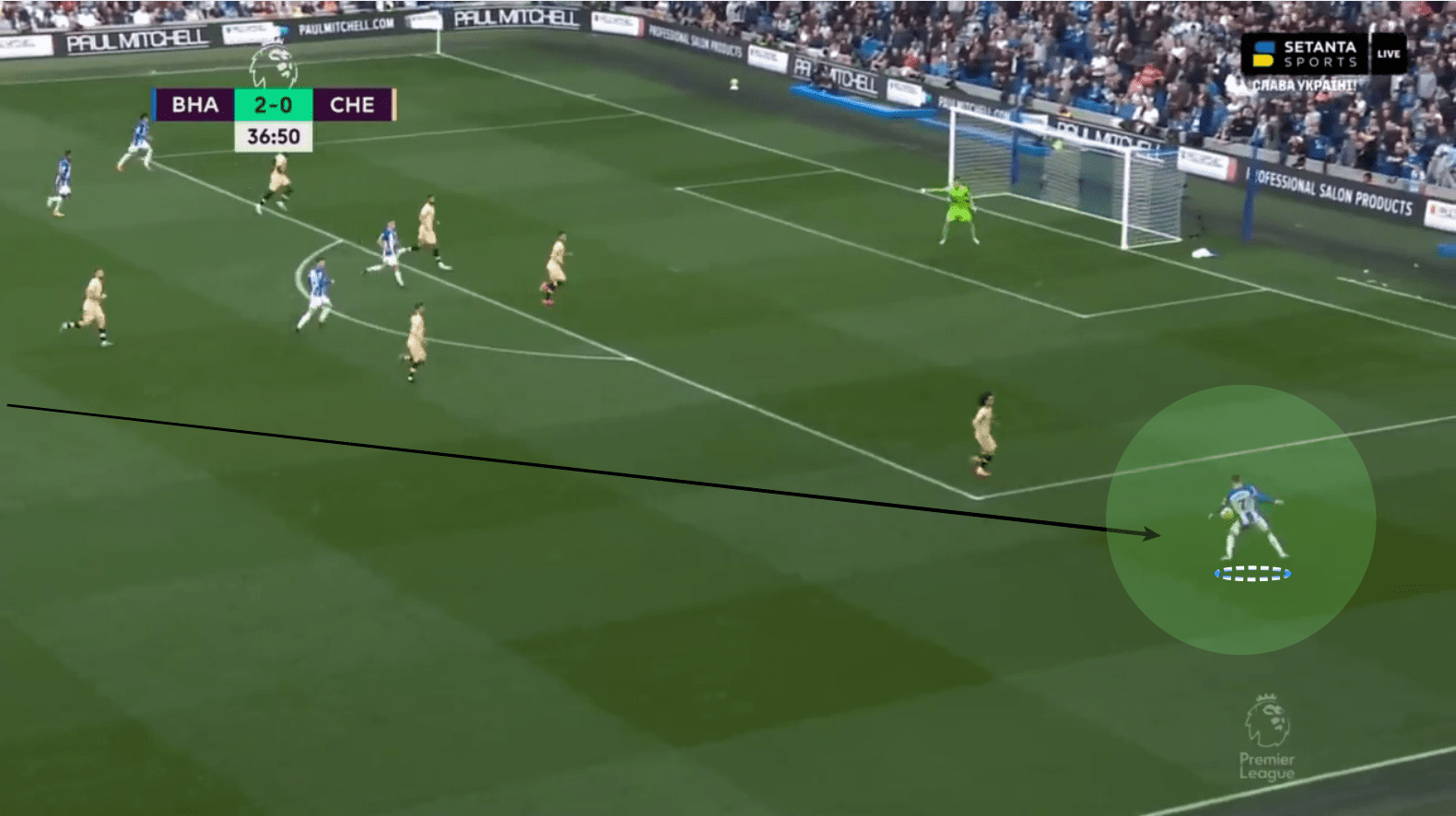
Even though the German’s positioning came out beneficial for Brighton in possession, they had some problems once their passes were intercepted and Gross was still inverted. That opened the space on the right-back position for the Chelsea players to exploit and they managed to do so in both halves of the game but the execution, once they got the ball in these situations, lacked in quality.
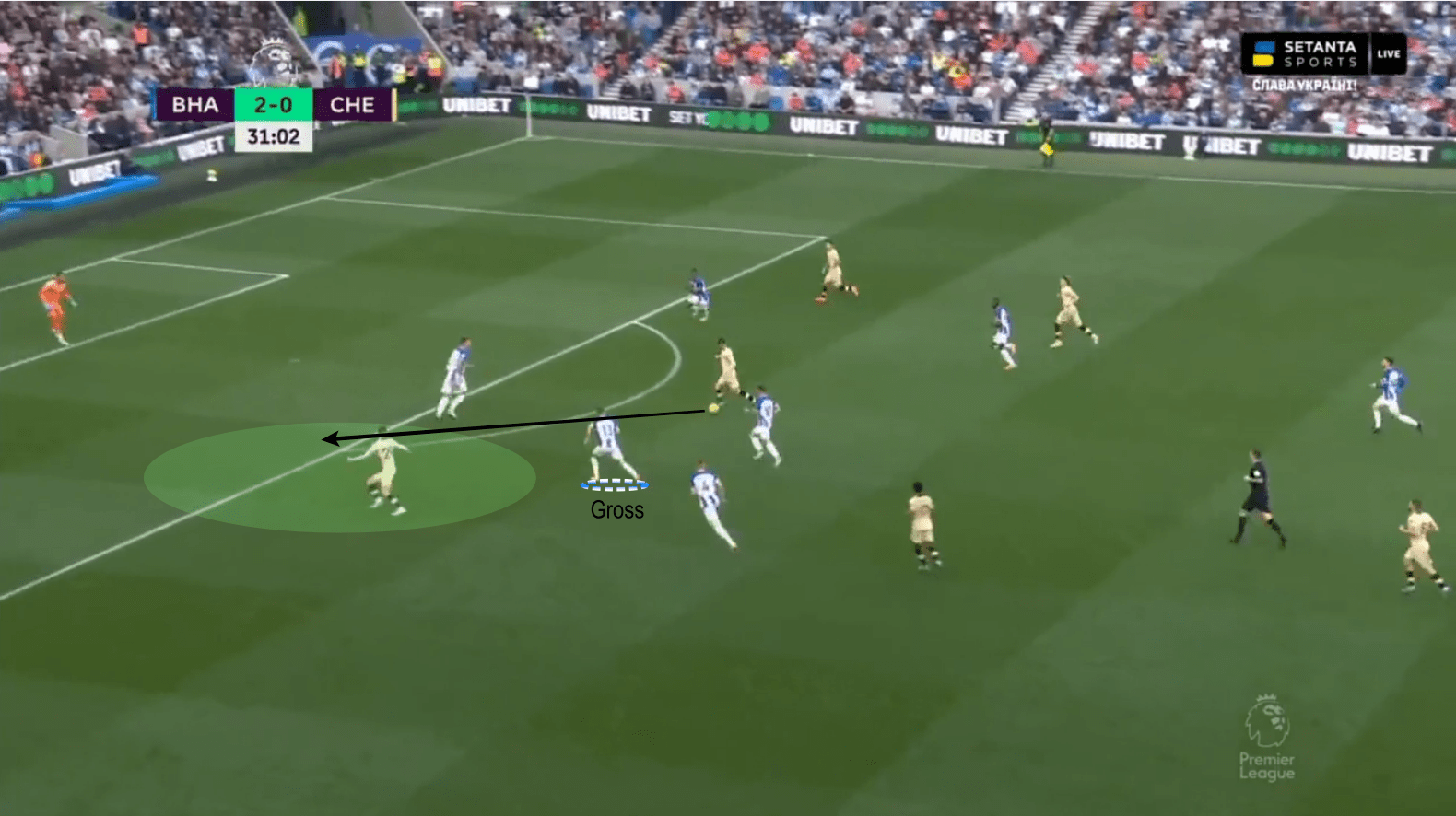
Once the game was fast-paced and Brighton’s lines got a bit more stretched, the away team had their chances and could’ve benefited from the space that was left for them to use it. Their positioning in these situations was very good, but the finishing of the actions wasn’t, so they came out empty-handed.
Chelsea’s offensive setup and Brighton’s pressing game
Even though the result suggests differently, Chelsea had their moments and was a fair rival to Brighton. The home team managed to create more beneficial situations and picked the lock of their rival’s system a bit better which lead them to win the three points, but Potter’s men also had proper intentions only not the concentration and the tools to get something more out of the matchup.
The Blues went for a 3-2-2-3 formation in possession, cleverly structuring their team and making the passing network as usable as possible. They put their opponents into struggle time and again because of this and some of their good tactical efforts would go under the radar because of the result on the scoreboard.
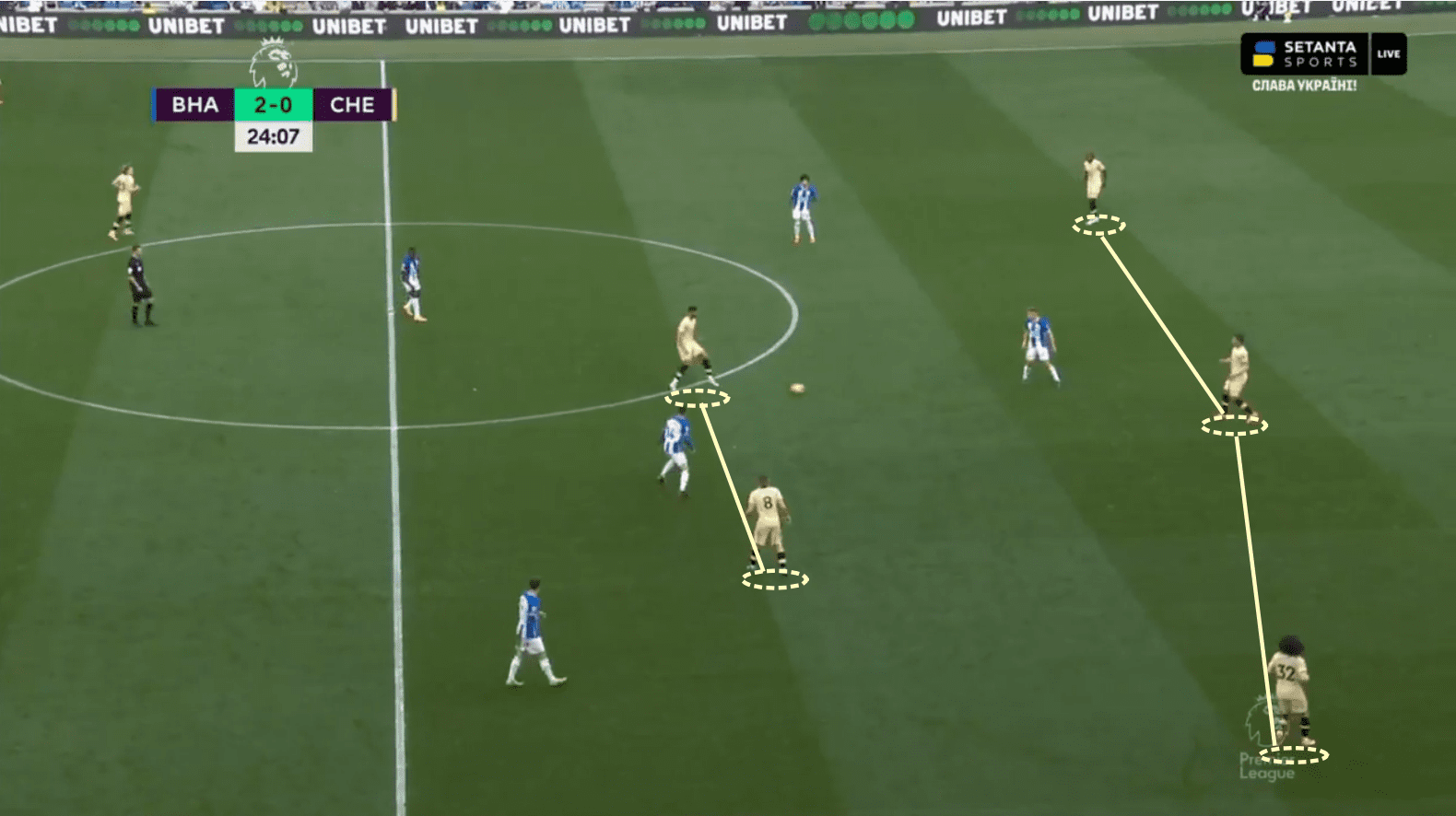
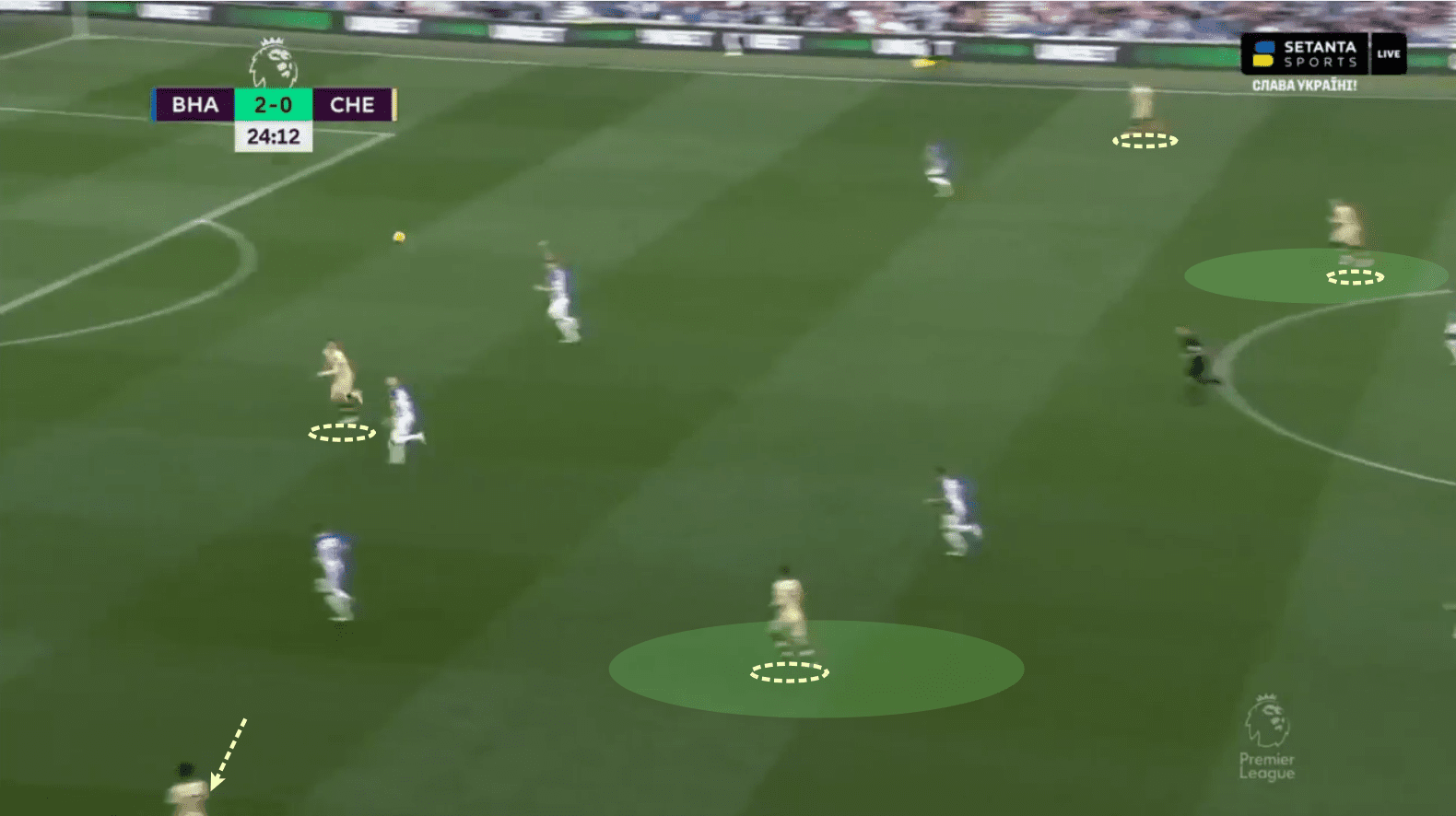
Their intention to position wide players very close to the bylines was the key to chance creation because they engaged the closest defenders and set their focus on the flank players which left a lot of room between centre-backs and full-backs.
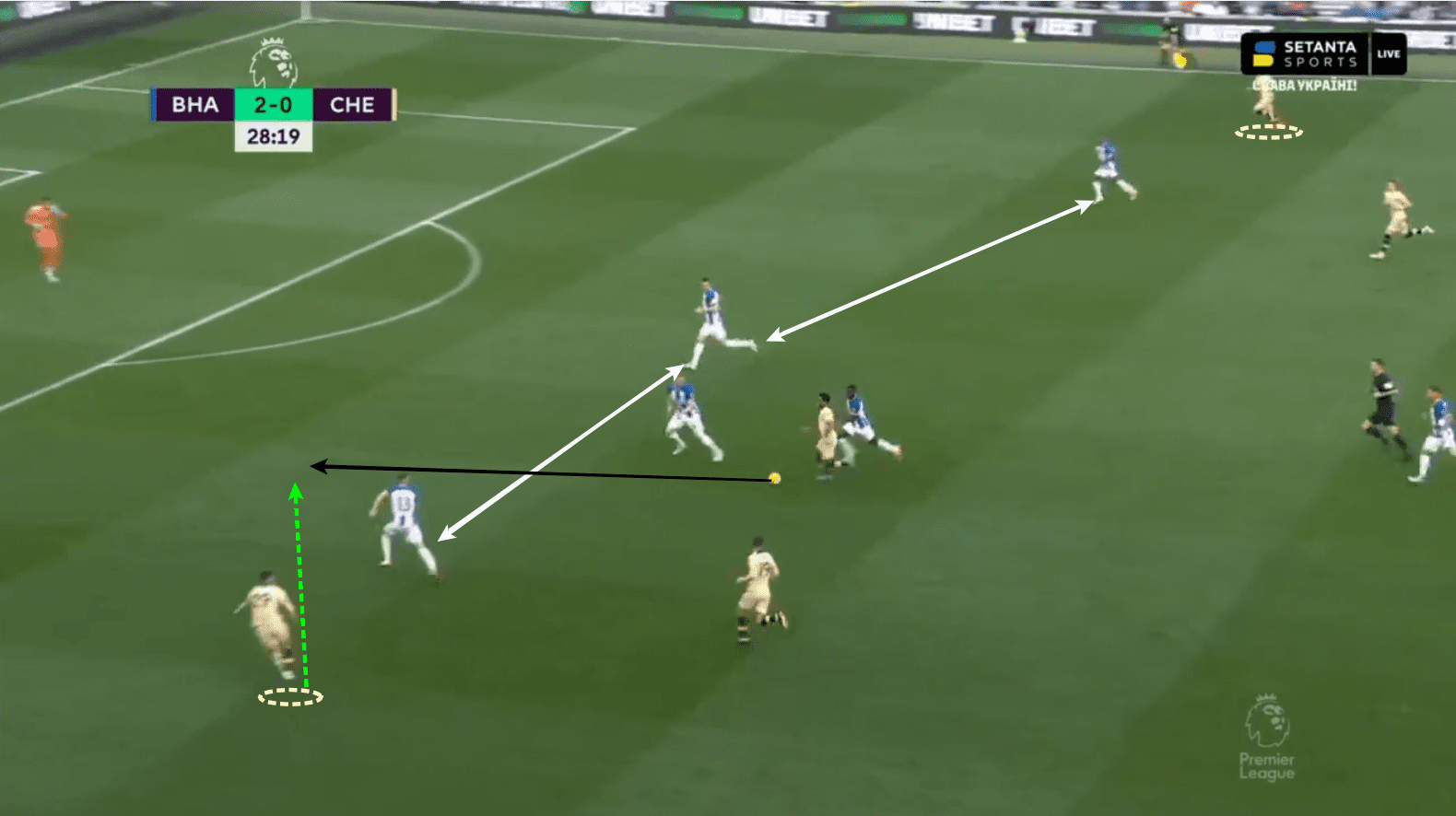
Once the space was open, which can be seen in the image above, Chelsea went for in-depth passes towards the players running in from the flanks. Brighton had their issues and got lucky in solving them because their opponents’ finishing wasn’t top-notch.
The best way to prevent Chelsea from utilising their good offensive structure was to press high and leave Potter’s team with no good and easy vertical passing lanes which would open the pitch for them and set them in positions from which they’d have their options planned out. Brighton pressed in a 1-3 structure, orienting their pressing narrowly and compactly.
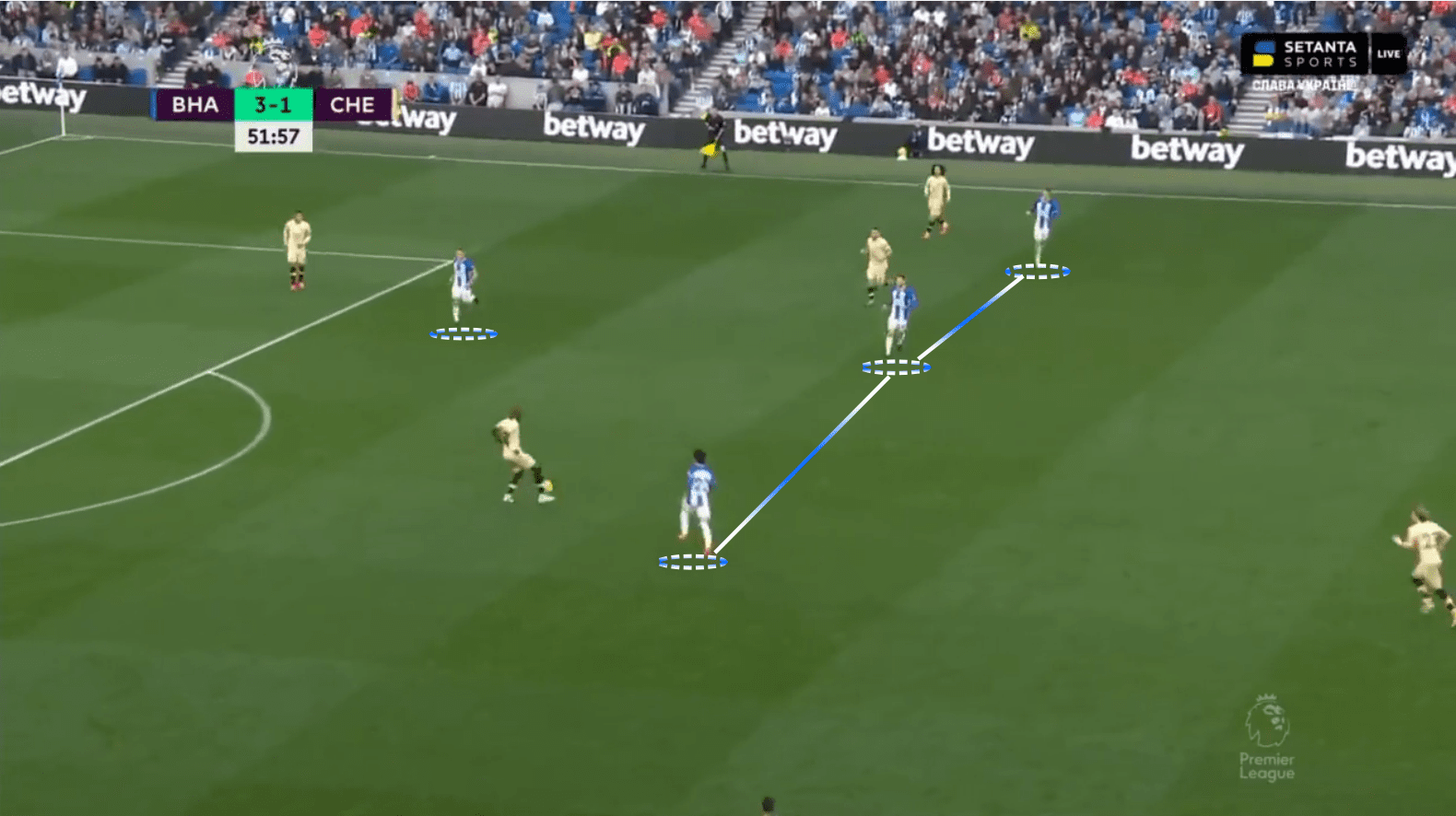
Once they cut the options for Chelsea with their man-marking high-press, they moved together to lure them into organised pressing traps. Their team shifting closed the passing lanes towards the area from which the ball has come and left the ball carrier to only play it down a singular path.
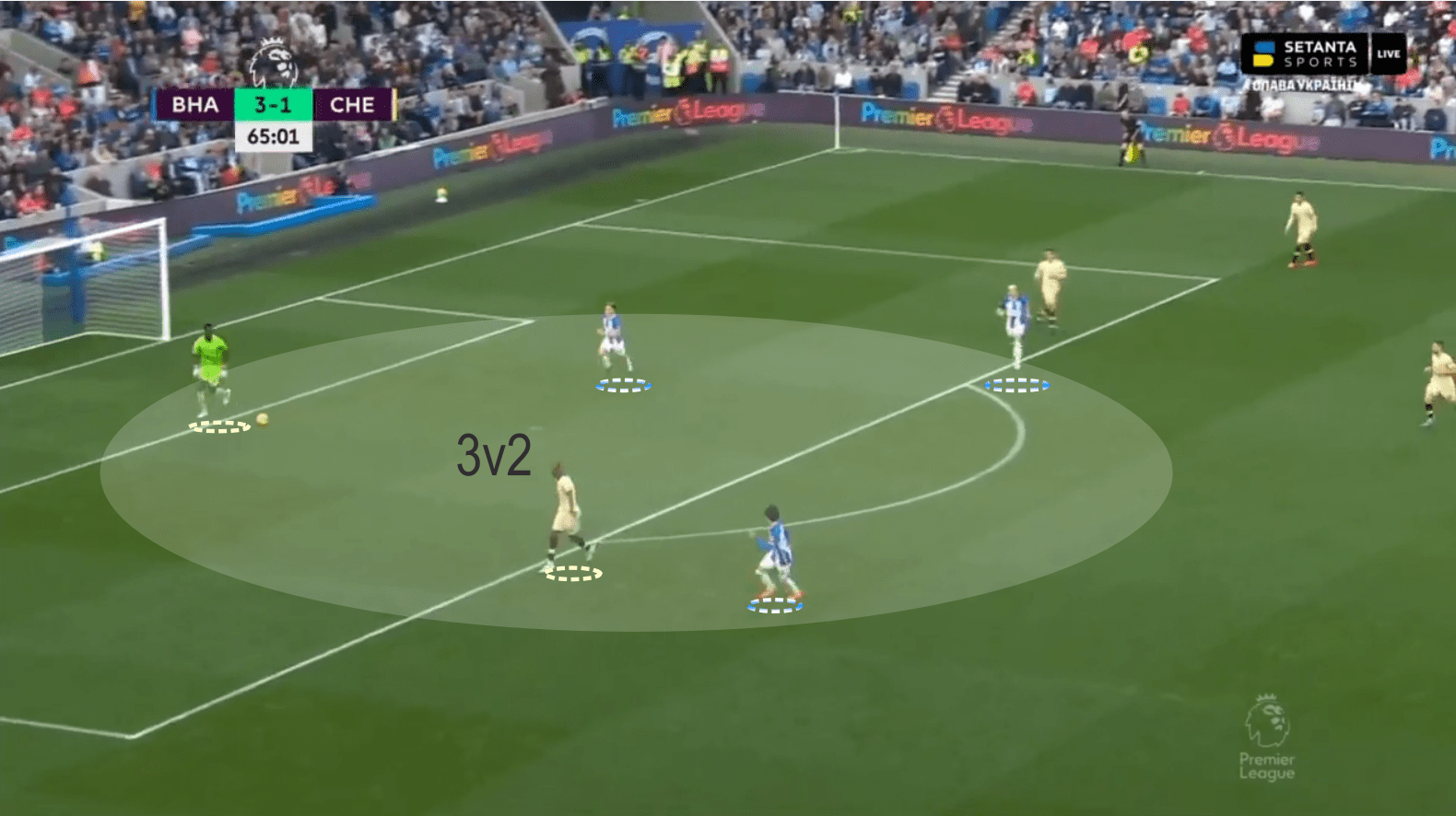
Creating a high-intense deficit setup for the opponent in a very dangerous area, prevented Chelsea from progressing with the plan vertically and going into more organized positional attacks more commonly. The away team had their game under control when the pressure was lower, and when they were allowed to move forward in a more well-thought manner, but De Zerbi’s pressing structure came in the way of doing that more often.
Conclusion
Roberto de Zerbi’s trademark in possession solutions and ideas panned out very profitable for Brighton in Potter’s return to the south of the country. The concept of “lure and exploit” created a lot of trouble for Chelsea’s defensive compactness and opened plenty of space for the home team to take advantage of. Also, the hybrid positioning and changes in Brighton’s formation that happened with Pascal Gross in the main role were an unsolvable obstacle for Potter and lead the home team into very beneficial isolations and space/time superiorities.
This tactical analysis has shown how the Seagulls came out as winners out of this fixture, and how they embodied most of the signature tactics their new coach brought to England, but also how the away team had the proper ideas to make the game more interesting, only lacking the quality to take more out of it which made them go home empty-handed.





Comments